Adaptation means the process of change by which an organism or species becomes better suited to its environment. Each species of animals have adapted to a particular habitat style; if any imbalance happened in the habitats, it leads to an unhealthy situation. Penguins have anatomical, behavioral, and physiological adaptations. Let’s discuss one by one.
Anatomical adaptations of the penguins
Anatomy deals with the structure of the body. Penguin’s body is large enough to survive in the extreme cold. Penguin has a torpedo-shaped long stretched body, short neck, sharp beak, short legs, and healthy webbed feet, wedge-shaped tail. Penguin species has a different height, weight, and body pattern. But every penguin has black color feathers on the back and underneath white colored feathers.
In every bird, forelimbs are in the form of wings. Although penguins belong to the class of birds, they are flightless because they don’t have air-filled bones in their arms; instead, they have solid bones. Their wings are known as flippers which help to fly underwater. Feathers cover all birds body, but penguins have a unique form of feathers which provide insulation against blizzards for penguins.
Penguins are the only birds in the world that carry a protein called -keratin which gives short, stiff, overlapped, windproof, and waterproof plumage. Not only on land, even in water feathers keep the penguins warm and waterproof though the temperature is as freeze as -2.20C. Feathers also help in maintaining streamlined shape, fast swimming and to reduce drag underwater. Since they are waterproof, they help in quick shedding or drying of water.
Penguins have sharp eyes that can spot the food even underwater. The sharp beak helps to catch their prey quickly, without slipping though they are slippery. Since they don’t have teeth, they swallow the fish, krill, and squid one at a time. Flippers made them perfect swimmers. Their legs and feet help to walk on land and to swim as well as tobogganing means sliding over the ice, which allows them to move fast on the ground.
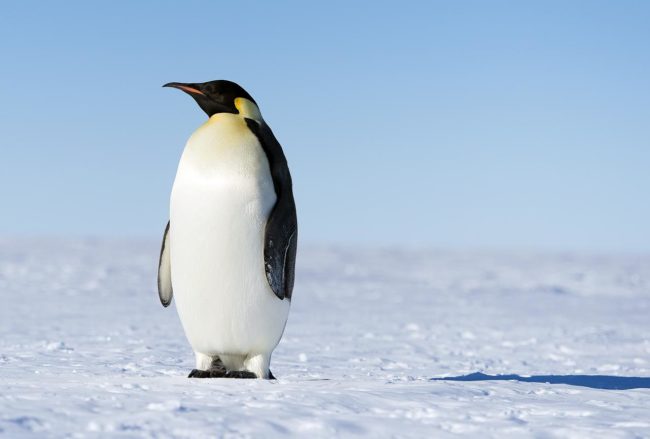
Behavioral adaptations of the penguin
Behavioral adaptation deals with the manners or style in which animals move and act. Penguins have different behavioral adaptations than other birds. During extreme cold, penguins crowd together in a tightly packed group to form a huddle with a common center. They can conserve heat and protect themselves by the effect of the wind.
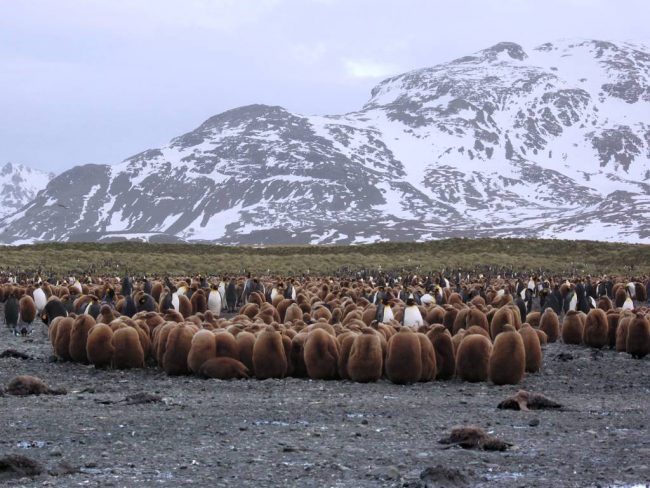
The male penguins carry their chick in their feet and cover them by their folded skin in the brood pouch. Penguins present on the outskirts of the huddle don’t get much warmer compared to the penguins inside. So huddling can prevent the loss of heat up to 50%. Coming to species of penguins, emperor penguins allows many huddles to take place because they are the species living in cold Antarctica.
Some species of penguins make a nest in the ground with rocks. Most of the time they breed during the winter. After laying eggs, female penguin transfers the eggs to the male penguin and leave the nest or colony for months. Male penguins take responsibility to look after the eggs. Until unless the female penguin gets back to males, they won’t go anywhere not even for food.
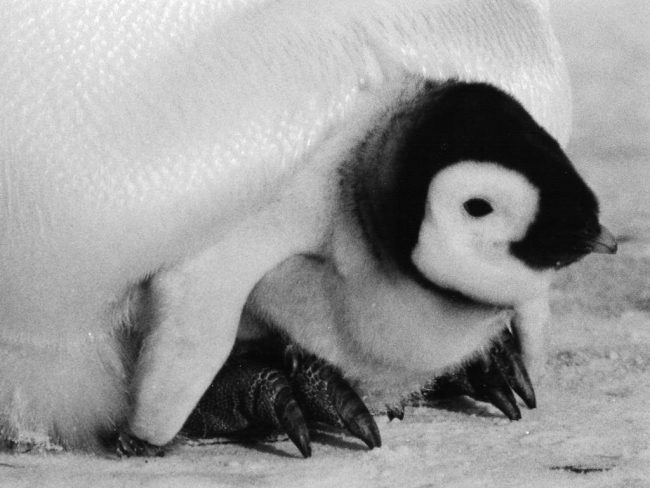
They conserve energy during these fasting days. Baby penguin gets shifted to mother penguin from father when female returns. The process goes quickly and carefully. They don’t let the chick to touch the ice while transferring.
If the baby contacts the ice for a few minutes, it may lead to death. Now it’s turned for the female penguin to carry its baby in the brood pouch. After this process, the male penguin goes for hunting the food. After chick getting five months old, both males and females go for hunting, leaving their young ones in the colony.
Physiological adaptations of the penguins
Physiological adaptations deal with the biological functions of an organism and changes in internal parts of the body. Penguins have a protective collection not only from outside but also from inside. They can sustain in the cold due to the unique character that they adapted from inside the body. The maximum diving depth of penguins is 1,8500 feet and at a speed of 15 mph. Diving depth depends on the species of the penguins.
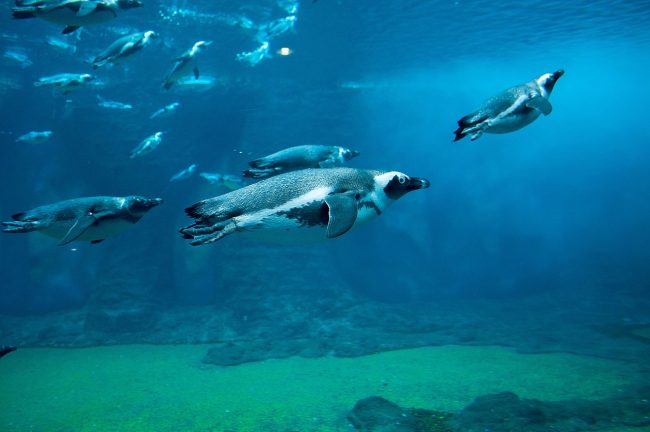
Penguins have an insulating thick fat layer which is known as ‘blubber’ which keeps warm inside and insulative feathers which keeps warm outside. The fat layer present under the surface of the skin, and during fasting days it gives the energy to stay longer hunger. Penguins have two types of insulative feathers, they are
- The soft feathers that directly attached to the skin known as ‘plumules.’
- The soft feathers that attached to primary feathers known as ‘afterfeathers.’
Due to the presence of this plumage, penguins can sustain in the freezing temperature up to -300C.
Penguins carry the DSG1(Desmoglein-1) gene; protein present in the upper layers of skin epidermis, which tend to give very thick skin at palms and feet. Yes, due to this penguins have thick skin in flippers and feet compared to other birds to resist the freezing temperature. They have control over the blood flow of their bodies because the arteries and veins are close to each other. So blood flows back resulting in less loss of heat in the parts of feet and flippers and also saves the energy- This process is ‘countercurrent heat exchange.’
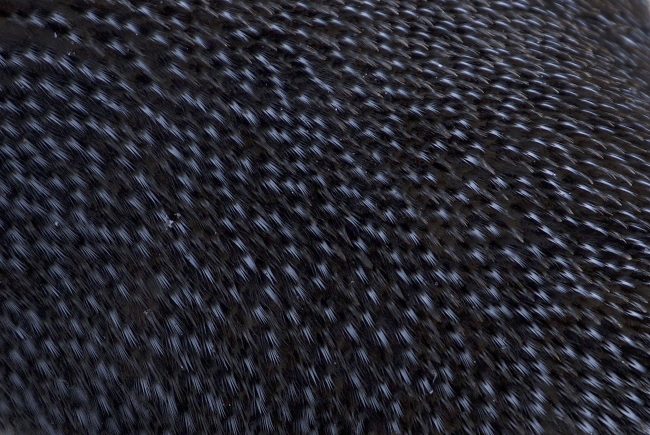
This heat exchange system recollects up to 80% of heat in the breath in the nasal passages. Comparatively, the human heartbeat is a bit faster than a penguins heartbeat. An adult penguin heartbeat is around 60-80 beats per minute (bpm) when they are on land. When they dive underwater, it decreases to 3 bpm. Penguins blood has more oxygen supply compared to humans, due to the presence of more hemoglobin. They can hold the breath for 20 minutes underwater.
Penguins can regurgitate their food, which means they can bring swallowed food up again to the mouth. This process helps the penguin to feed their chick. Chick inserts its mouth to its parent mouth and takes out the food and swallows, which provides protein for the baby penguin that they can survive for a week.
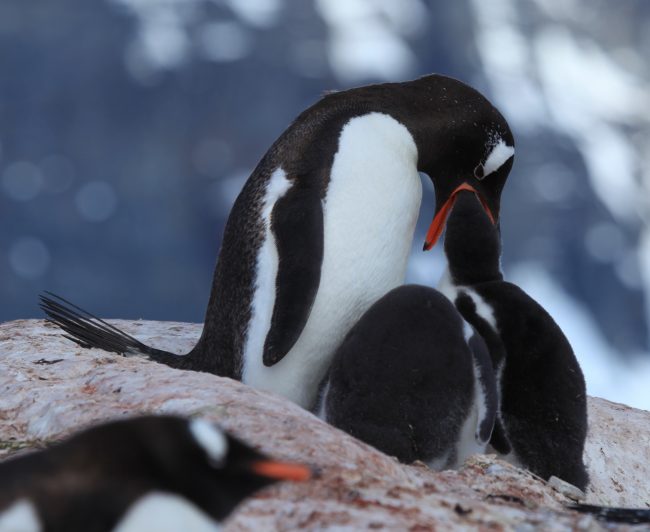
Conclusion
Due to these adaptations penguins can survive in the cold temperature. The size and extremities (hands and feet of the body)of their body helps to resists the freeze. Their behavior of huddle formation can prevent blizzards. The internal function helps to sustain even in -300C. All penguins do not present in Antarctica, they are spread over the other islands, seas, temperate zones, etc,.
Reference:
https://www.coolantarctica.com/Antarctica%20fact%20file/wildlife/emperor-penguin-adaptations.php
Penguin Adaptations for Survival in Antarctic Climates
http://www.antarctica.gov.au/about-antarctica/wildlife/animals/adapting-to-the-cold
http://www.planet-science.com/categories/under-11s/our-world/2011/03/penguins—extreme-divers.aspx